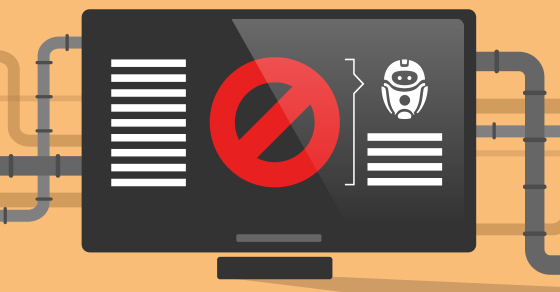|
|
Promoting a WordPress plugin the ‘old-fashioned’ way is becoming harder and harder. People have become savvy to outbound marketing strategies.
Content marketing, on the other hand, is becoming the dominant player in the digital marketing mix. In short, if you’re not blogging yet, you should be.
That said, to amplify your content marketing and get worthwhile results, you have to learn how to conduct proper outreach. Without it, your content creation efforts will not yield the kind of results you’re looking for.
In this post we’re going to tackle both pieces of the puzzle by taking a simple and highly actionable approach to creating high quality content and getting it in front of your prospective customers.
Let’s get cracking!
Phase 1: Research Topics and Create a User Persona
Let’s start with the big reveal: people don’t want to buy your plugin – they want to buy a solution to their problem. And because that’s what they care about, it’s what we care about.
One way of digging deep into your users’ problems is to study related forums and support boards for competitors’ plugins. Note down oft-asked questions and areas of concern and/or interest. These are the issues you will provide a solution to.
At the same time, make notes on who are asking these questions. Are they advanced WordPress users or complete newbies? Are they working on a personal blog or an enterprise-level website? With this information, construct a simple ‘user persona‘ that details everything you know about the most typical user of your plugin.
Don’t overthink this stage or agonise over the finer details; you can always refine your user persona at later dates, when you’re likely to have more useful information to play with.
Phase 2: Create Quality Content
I’ll give you one simple rule for your content: focus on quality, not quantity.
I probably don’t need to tell you this, but Google cares about quality, and the days of ranking high up in the search engines by producing an amorphous mass of poor-quality content are gone. And that’s not mention the blatantly obvious – that customers are certainly interested in quality over quantity.
By “quality” I don’t necessarily mean how grammatically correct your articles are (although well-written articles are obviously highly valuable); most importantly, we’re talking about the substance of your pieces. When writing articles, your focus should be on one simple question: Am I providing the best possible solution to the problem at hand? By all means, seek to improve the quality of your writing, the images you use, the design of your blog, etc., but focusing on the above simple question alone can be more powerful than all other considerations combined.
The upshot of focusing on a smaller number of high quality articles is that you spend less time overall writing a smaller number of high quality articles on topics you’re already bound to be familiar with.
In case you’re wondering, there is no ‘correct’ number of articles to produce per week or per month. Consider, for example, that Brian Dean from Backlinko publishes just one article or per month, yet his blog receives more than 150,000 visitors per month. So, pick a goal that you believe you can deliver on and start from there.
Phase 3: Conduct Outreach
Once you have published a post, it’s time to get it in front of your prospective customers. Here’s an important lesson ignored by the vast majority of bloggers out there: as a rule of thumb, you should be spending at least three times as long on outreach on a post as it took you to produce it.
As I’ve already alluded to, content marketing is not a race to publish as many posts as possible. With that in mind, and assuming that you’re writing high quality pieces, each article you write has a huge amount of potential. Why would you move onto writing your next piece if you haven’t utilized the full potential of an article you’ve already published?
Now let’s get down to the details. There are many ways to promote a blog post, but in my humble opinion, the most effective for small startup blogs is outreach.
First of all, you’ll need a list of influential types who might be interested in your content. This can be anyone from someone with a few thousand Twitter followers to one of the writers for a huge blog like WPMU DEV. Be indiscriminate on your first run of researching potential contacts; you’ll be paring it down before long.
Once you have your list, it’s time to start (you guessed it) reaching out. From someone who (as a WordPress writer) often receives emails from WordPress developers looking to promote their themes and plugins, here’s my “how to actually gain the interest of (rather than piss off) an influencer” checklist:
- Never use a template; write every email from scratch.
- Recognize the person and their work. Don’t flood them with praise, though – they’re not stupid.
- Tell them why you’re sending them an email; don’t beat around the bush. Be succinct and to the point.
- Tell them what’s in it for them. It’s human nature to think about ourselves the most. Give them a reason to allow you to talk about your plugin and the problem it solves. (In the case of writers, they’re always on the look out for topics to write about, so do them a favor and provide them with one!).
- Present a clear call to action. Be clear about what you want them to do, whether it’s to share your content with their followers or mention your content in future articles they write.
Create a simple spreadsheet that keeps track of (1) the people you reach out to, and (2) the results of your outreach efforts. This will enable you to evaluate the results of your efforts, which will enable you in turn to adjust your methods (in terms of both what you send and who you send it to) to improve future results.
Conclusion
Content marketing might seem like a lot of work, but it’s well worth it. Best of all, it doesn’t have to be as difficult as many make it out to be. Focus on taking action and accepting that you’ll learn more quickly by doing so rather than procrastinating, and you’ll be rewarded.
That said, if you have any questions and/or comments about the above steps, please don’t hesitate to get in touch via the comments section below!








Hey Tom,
Great article if I could just say I agree with you on everything.
I would like to add as a recipient of emails regarding plugins and indeed themes keep it interesting.
I receive quite a few emails asking me to review themes and such. I delete quite a few as they're quite dull in content.
My tip? Make the email interesting and tell people why you think your plugin/theme is a winner and worthy of a mention.
Short and sweet but punchy is all it needs to be. Agree with giving website owners a topic and why your plugin is the solution.
It fuels a blog post and in my opinion lends itself to a better written blog post that will actually get read.
May I also add that I have set up a directory service for themes and plugins for developers to submit to. I'm not going to link to it here but it's on my site wpin.me
Thanks for the article Tom a great read indeed.
Hi Ben!
Thanks! And thank you for that great suggestion.
Cheers,
Tom